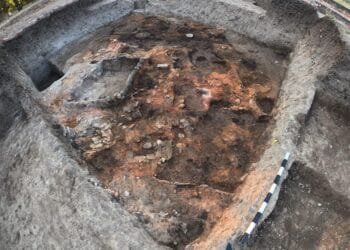According to a report by Norway Today, a team of archaeologists from the Norwegian Maritime Museum has made an extraordinary discovery in Oslo, Norway. They have found the remains of a well-preserved wooden ship in Bjørvika, a significant find that is considered rare.

Archaeologist Sarah Fawsitt from the Norwegian Maritime Museum described the discovery as highly unique. At this stage, it is unclear whether the ship is of Norwegian origin or if it may have originated from Poland or Germany.
The Norwegian Institute for Cultural Heritage Research (NIKU) is also involved in the excavation process, collaborating with the museum.
Excavations in Bjørvika have been ongoing for approximately two decades, resulting in the discovery of over 50 boat remains. Fawsitt mentioned that the newly found ship is clinker-built, a construction technique where the hull planks overlap one another.

This method has historical significance as it was commonly employed by the Vikings and is recognized as the traditional Nordic wooden boat construction technique.
The ship, which has been embedded in clay on Sørenga for several centuries, is believed to be constructed from oak and is remarkably old. While it is suspected to date back to the Middle Ages, further investigation is necessary to confirm its precise age.
Fawsitt expressed the team’s excitement about uncovering the ship’s middle section and taking samples to determine the cargo it carried. The discovery holds the potential for additional findings, making the process akin to unwrapping a long-awaited Christmas present.
The ship discoveries in Bjørvika contribute significantly to understanding boat-building methods during the Middle Ages and early modern times. They offer valuable insights into the historical context and daily life of Oslo’s harbor area in previous eras.
The ongoing research and analysis of the ship’s remains and associated artifacts will provide a deeper understanding of maritime history in the region.
The importance of these findings extends beyond academic circles, as they help to preserve and promote cultural heritage. The discovery of the wooden ship adds to the collective knowledge of Norway’s historical maritime activities and enhances public appreciation of the country’s rich past.
As the excavation progresses, researchers anticipate uncovering more details about the ship, shedding light on its origins and the broader historical context in which it existed.
Sources: © NTB Scanpix / Norway Today



























